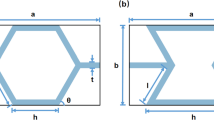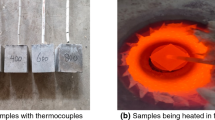Abstract
Nailplated timber trusses are widely used in residential housing. However, there is limited evidence of use or research on the application of nailplated trusses in exposed environments. It is common knowledge to the nailplated truss industry that weather-exposed trusses experience a phenomenon referred to as “nailplate backout”, where the nailplates separate from the timber surface due to the shrink-swell mechanism of the timber in response to its varying moisture content. This paper investigates the performance of innovative nailplated joints on: (1) stopping moisture-driven backout and (2) increasing the capacity of the joints, when compared to currently used joints, after exposure to severe moisture cycling. Three different experimental sets of joints were manufactured to achieve these outcomes, with Set 1 and Set 2 containing 100 splice and 100 butt joints while Set 3 had 40 splice and 40 butt joints. Sets 1 and 2 have a re-designed tooth profile where: (1) Set 1 combined a polyurethane adhesive with a modified nailplate tooth designed to allow the adhesive to penetrate the timber and (2) Set 2 implemented a hook in the middle of the nailplate teeth to grab the timber when the nailplate tries to separate from the timber, either from moisture induced backout or from loading. Polyurethane adhesive was also used in Set 3 but on an un-modified tooth profile. To evaluate the efficiency of the new nailplates, control joints with unmodified nailplates were manufactured for each set and tested. All joints were subjected to severe accelerated moisture cycles inside an air-driven kiln with the temperature being kept constant 70 °C and the relative humidity varied between 15 and 95%. The cycles consisted of a 7-h wetting and an 18-h drying period. For Sets 1 and 2, the tensile capacity of the joints was measured after 0, 3, 6, 9 and 12 moisture cycles, while for Set 3, it was only measured after 0 and 12 cycles. The backout was recorded after each moisture cycle for Sets 1 and 2 and after 12 cycles for Set 3. The average backout of Set 1 and Set 2 control joints after 12 severe cycles was 1.13 mm and 1.01 mm, respectively, while the addition of glue and a hook reduced the backout to 0.56 and 0.92 mm, respectively. In terms of capacity, the adhesive in Set 1 increased the capacity for the splice joints and butt joints by 43% and 13%, respectively. In Set 2, the hook only marginally increased the capacity of the splice joints by 13% and reduced the average butt joint capacity. Observations were made regarding the failure modes of the joints. The addition of the adhesive and hook to the nailplate teeth resulted in more joints failing due to the capacity of the timber rather than due to the nailplate separating from the timber during the tensile testing.

























Similar content being viewed by others
References
Allday A (2017) Wooden structural component manufacturing in Australia. IBISWorld
American National Standards Institute (2014) ANSI/TPI 1-2014: national design standard for metal plate connected wood truss construction. New York, New York
Atkins WB (1962) Connector plate. United States of America Patent, 16 January 1962
Australia Standards (2006) AS/NZS 1748:2006 timber—mechanically stress-graded for structural purposes. Standards Australia, Sydney
Brancheriau L, Bailleres H (2002) Natural vibration analysis of clear wooden beams: a theoretical review. Wood Sci Technol 36:347–365. https://doi.org/10.1007/s00226-002-0143-7
Bylund D (2017) Enabling prefabricated timber building systems for class 2 to 9 buildings. Australian Government Department of Agriculture, Fisheries and Forestry (DAF)
CIRAD (2018) BING® (Beam identification by nondestructive grading) software
Foschi RO (1977) Analysis of wood diaphragms and trusses. Part I: Diaphragms. Can J Civ Eng 4:345–352. https://doi.org/10.1139/l77-043
Groom LH (1994) Effect of moisture cycling on truss-plate joint behavior. For Prod J 44:21
Groom L (1995) Effect of moisture cycling on mechanical response of metal-plate connector joints with and without an adhesive interface. United States Department of Agriculture-Forest Service-Research Paper so-291—September 1995, New Orleans, Louisiana
Gupta R, Gebremedhin K (1990) Destructive testin of metal-plate-connected wood truss joints. J Struct Eng 116:1971–1982. https://doi.org/10.1061/(ASCE)0733-9445(1990)116:7(1971)
Klein G, Kristie R (1998) Inspection and repair of plate-connected wood trusses. Proc Int Conf Timb Eng 1998:449–459
Mainey AJ, Gilbert BP, Bailleres H, Gunalan S, SmithM (2016) Mechanical and artificial improvement of nailplate connected timber trusses. Paper presented at the Proceedings of the 10th World Conference on Timber Engineering WCTE2016, Vienna, Austria
Mainey A, Gilbert BP, Bailleres H, Gunalan S, Smith M (2019) Solutions to reduce moisture driven backout and improve withdrawal strength of nailplates: experimental investigations. Eur J Wood Prod 77:257–269. https://doi.org/10.1007/s00107-019-01386-y
McAlister RH (1990) Tensile loading characteristics of truss plate joints after weathering and accelerated aging. For Prod J 40:9–15
Melton T (2000) Failures of in-service mpc parallel-chord wood floor truss components reveal deficiencies in ansi/tpi standards. Austin, TX, USA
Mtenga PV, Tawfiq KS, Rambo-Roddenberry M (2012) Performance of metal-plated wood joints exposed to periods of soaking moisture. J Perform Constr Facilities 26:748–753. https://doi.org/10.1061/(ASCE)CF.1943-5509.0000271
Neilson J (1999) An unravelling of the effect of partially embedded punched metal plate fastener on the lateral anchorage strength vol R9904. Aalborg
Nguyen M, Paevere P, Leicester R, Syme M (2008) Models for prediction of microclimate and timber moisture content within the building envelope. Paper presented at the 10th World Conference on Timber Engineering WCTE2008
Paevere P, Nguyen M, Syme R, Leicester KH (2008) Nailplate backout—is it a problem in plated timber trusses. In: Proceedings of the 10th world conference on timber engineering WCTE2008, At Miyazaki, Japan
Paevere P, Nguyen M, Syme R, Leicester KH (2009) Mechano-sorptive nailplate backout in nailplated timber trusses. Forest & Wood Products Australia, Australia
Quaile AT, Keenan FJ (1979) Truss plate testing in Canada: tet proceedures and factors affecting strenght properties. In: Metal plate wood truss conference ST. Louis, Missouri, 1979, pp 105–112
Redman AL, Bailleres H, Perré P, Carr E, Turner I (2017) A relevant and robust vacuum-drying model applied to hardwoods Wood SciTechnol 51:701–719. https://doi.org/10.1007/s00226-017-0908-7
Smith GC, Needham JR, Turnbull WT (1988) Wood joint connector plate. United States of America Patent, 29 March 1998
Smulski S (1993) Case study: flat truss failure. J Light Constr 38–39
Standards Australia (2001) AS1649-2001 Timber—Methods of test for mechanical fasteners and connectors—basic working loads and characteristic strengths. Standards Australia, Sydney
Standards Australia (2010) Specification for preservative treatment Part 1: Sawn and round timber. Standards Australia, Sydney
Standards Australia (2012) AS1080.1-2012 timber—methods of test—moisture content. Standards Australia and Standards New Zealand, Sydney
Street S (2010) Light metal plate connected wood trusses and maybe a few other things. In: MBOA conference, Wood WORKS Project of the Canadian Wood Council, Ottawa, April 28, 2010
Truss plate Institute of Canada (2014) TPIC 2014 truss design prodedures and specifications for light metal plate connected wood
Walkup SL, Erceg M, Brown N, Brown VL (2016) Repair of partially embedded metal connector plates. For Prod J 66(3):225
Wood Solutions (2018) Wood construction systems. Forest Wood Products Australia (FWPA), Australia
Acknowledgements
Hyne Timber is thanked for gratefully providing the timber for the experiments. The authors also express their gratitude to the Department of Agriculture and Fisheries, Queensland Government in providing their expertise and the use of their facilities for the experiments. Thanks is also given to Multinail for their advice and provision of the nailplates. The main author also acknowledges the funding provided by the Australian Government Research Training Program Scholarship.
Author information
Authors and Affiliations
Corresponding author
Ethics declarations
Conflict of interest
On behalf of all authors, the corresponding author states that there is no conflict of interest.
Additional information
Publisher's Note
Springer Nature remains neutral with regard to jurisdictional claims in published maps and institutional affiliations.
Rights and permissions
About this article
Cite this article
Mainey, A.J., Gilbert, B.P., Bailleres, H. et al. Capacity of innovative nailplated joints subjected to accelerated moisture cycling. Eur. J. Wood Prod. 78, 237–256 (2020). https://doi.org/10.1007/s00107-020-01501-4
Received:
Published:
Issue Date:
DOI: https://doi.org/10.1007/s00107-020-01501-4




